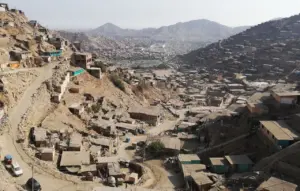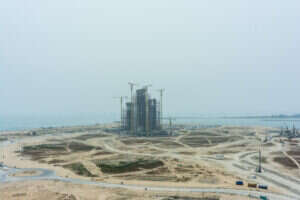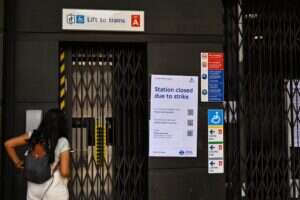This Saturday, a massive earthquake hit Nepal. As of this morning, the death toll was above 3,000, and over 6,500 others have been injured. While the earthquake’s epicentre lay somewhere between Kathmandu, the country’s capital, and Pokhara, a village to its west, there were casualties across the country’s borders into China and India.
The tremors only lasted for about a minute, but the quake’s high magnitude – which, at 7.8, was higher than 2010’s Haiti earthquake – meant that buildings across Kathmandu were flattened, while almost every home in Pokhara was destroyed. In the Himalayas and nearby settlements, the tremors caused landslides and avalanches. Many who were trekking in the mountains at the time of the quake are still missing. In the Kathmandu Valley, at least four of the area’s seven UNESCO heritage sites have been badly damaged.
Kathmandu lies on what scientists call “an area of high seismic activity”. The same tectonic plates that smashed together to create some of the world’s tallest mountains cause earthquakes when they shift and rub together; as a result, the area experiences a serious quake around every 70 to 80 years. The last, in 1934, killed over 10,000 people.
Since then, the city’s massive expansion has brought with it an explosion informal housing and communities built with little regard for building codes and earthquake resistance. It’s only in the past ten years that municipal and national governments have rolled out risk management plans. The Nepal Risk Reduction Consortium, for example, set about retrofitting schools and hospitals for natural disasters from 2009.
This latest quake, however, shows that’s there’s still much more to be done. Alongside its rebuilding efforts, the city needs to invest in earthquake-ready buildings, and regulations which would make them standard across the city. In December we published this article, by Nepalese journalist Rubeena Mahato, looking at both the expansion of Kathmandu, and its earthquake readiness; it’s well worth a few minutes of your time.
Below are some pictures of the earthquake’s aftermath. You can donate to relief efforts through Oxfam, the Red Cross, Doctors Without Borders or Save the Children.

Residents inspect a crack in a major road.

A member of the Nepalese security forces sets up a tent in Bhaktapur on the outskirts of Kathmandu.
.jpg)
Reidents gather around the collapsed Dharahara tower.

A helicopter rescues the injured from Everest base camp.

A resident plays with his daughter as he is treated for injuries.

A Buddha statue is surrounded by debris from a collapsed temple in the UNESCO world heritage site of Bhaktapur.

A Dutch search and rescue team with tracker dogs get ready to search for survivors.

A collapsed temple in Kathmandu’s city centre.
All images: Getty.






